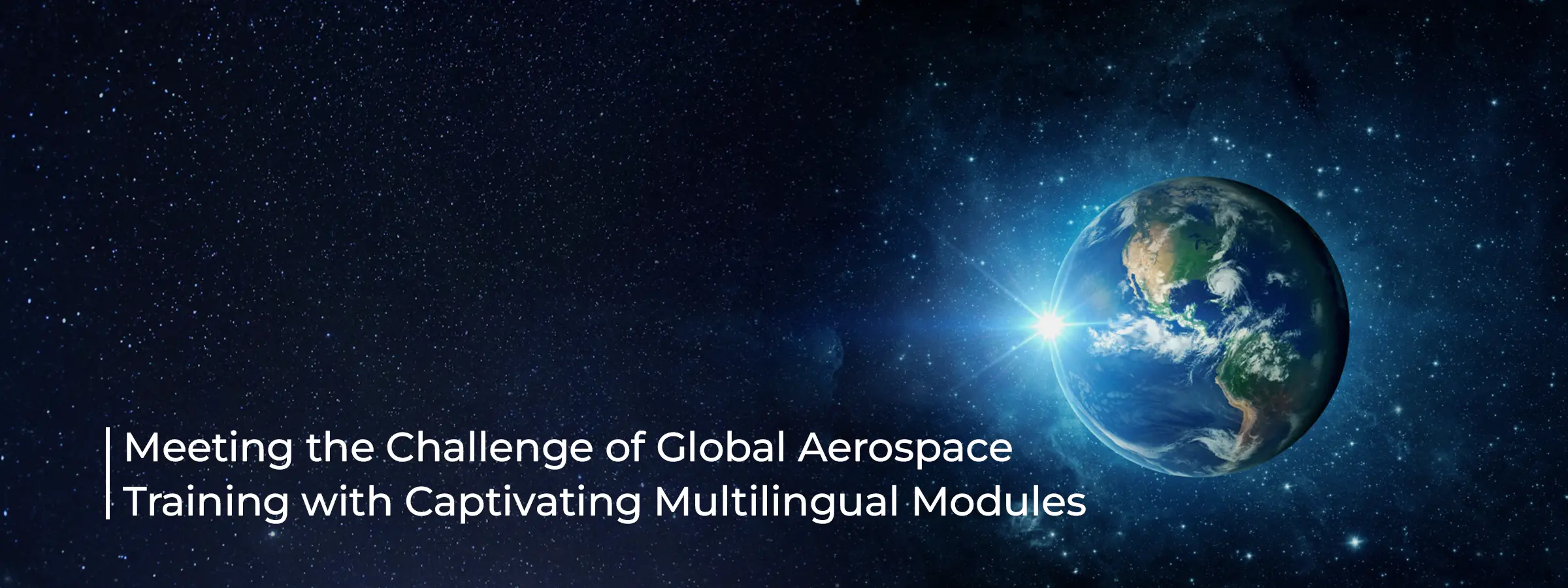
The imperative for cutting-edge, global training programs is clear in the rapidly evolving aerospace and defence industry. These programs must cover the technical complexities of the sector and bridge the diverse linguistic and cultural landscapes of a global workforce. Developing engaging, educational content that transcends language barriers presents a unique set of challenges and opportunities. This blog post delves into the intricacies of crafting captivating multilingual training modules, highlighting the pivotal role of multilingual multimedia services in enhancing global training initiatives, employee engagement, and operational excellence.
The aerospace sector demands precision, safety, and innovation. Training programs in this field convey highly technical and specialised information to a diverse, global audience. The challenge is ensuring that this critical knowledge is accessible and engaging to all employees, regardless of their linguistic background. This is where the expertise of multilingual multimedia services becomes indispensable.
• Technical Accuracy Across Languages: Translating complex aerospace jargon and concepts accurately across multiple languages without losing the essence or introducing errors.
• Cultural Sensitivity and Localization: Adapting content to reflect cultural nuances and learning preferences, ensuring it resonates with and is relevant to diverse audiences.
• Engagement and Retention: Creating compelling and interactive content that captivates learners, enhancing retention of technical knowledge in a highly specialised field.
Leveraging multimedia elements such as videos, animations, and interactive simulations, translated and localised for multiple linguistic groups, can dramatically enhance the efficacy and engagement of training programs. Here's how:
Enhanced Understanding Through Visual Learning Visual aids like animations and simulations transcend linguistic boundaries, offering a universally understandable medium that can dramatically improve comprehension of complex concepts. Combined with multilingual voiceovers and subtitles, these tools become even more powerful, catering to various learning styles and preferences.
Localisation for Greater Relevance Localisation goes beyond mere translation; it involves adapting content to reflect local cultural contexts, regulations, and scenarios. In the aerospace industry, where rules and operational environments can vary significantly from one country to another, localisation ensures that training is not just understood but is also relevant and applicable to the learners' specific contexts.
Interactive Modules for Engaging Learning Experiences Interactive e-learning modules incorporating gamification elements, quizzes, and real-world scenarios can significantly boost engagement. When these modules are available in the learners' native languages, they not only make learning more accessible but also more compelling, leading to higher retention rates and a more proficient, confident workforce.
Innovative aerospace companies have successfully implemented multilingual training programs, utilising a mix of localised videos, interactive modules, and augmented reality (AR) applications. For instance, one leading company developed a multilingual safety training program using AR glasses, allowing technicians to practice in a simulated yet realistic environment with instructions in their native language. This approach improved safety protocol adherence and increased employee confidence and job satisfaction.
The latest AI and machine learning advancements offer unprecedented opportunities for creating and deploying multilingual training content. Automated translation services and human oversight for quality assurance can expedite the development of multilingual materials. Meanwhile, AI-driven personalisation algorithms can tailor learning paths to individual users, adjusting for language proficiency, learning speed, and knowledge gaps.
As the aerospace and defence industry expands globally, the need for comprehensive, engaging, and accessible training programs has never been greater. The strategic use of multilingual multimedia services presents a viable solution to the challenges of global aerospace training, offering a pathway to enhanced employee engagement, operational safety, and technical proficiency. By embracing these tools and technologies, the aerospace sector can ensure that its workforce is not only well-trained but also profoundly engaged and uniformly proficient, regardless of language or location. In navigating the complexities of global training, the industry is poised to reach new heights of innovation and excellence, propelled by the power of language and multimedia.
© 2024 WHITE GLOBE GROUP PVT LTD